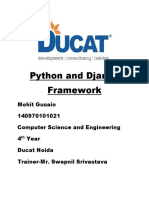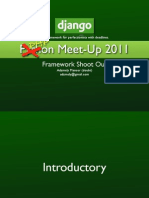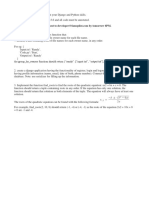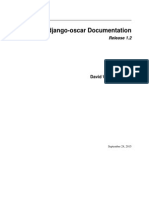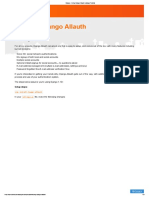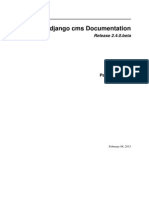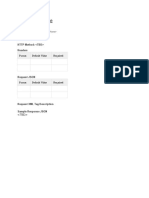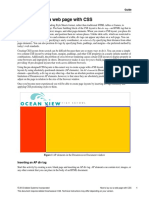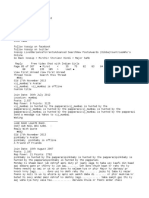0% found this document useful (0 votes)
401 views60 pagesDjango Overview
The document provides an overview of Django, an open-source Python web framework. It discusses what Django is, its history and key features like rapid development and clean design. It also outlines the basic workflow in Django involving templates, URLs, views, forms, models and the admin interface. Technical details covered include the project directory structure, modules, common commands like runserver, migrations, template tags and URL configuration.
Uploaded by
hacker noobCopyright
© © All Rights Reserved
We take content rights seriously. If you suspect this is your content, claim it here.
Available Formats
Download as PPTX, PDF, TXT or read online on Scribd
0% found this document useful (0 votes)
401 views60 pagesDjango Overview
The document provides an overview of Django, an open-source Python web framework. It discusses what Django is, its history and key features like rapid development and clean design. It also outlines the basic workflow in Django involving templates, URLs, views, forms, models and the admin interface. Technical details covered include the project directory structure, modules, common commands like runserver, migrations, template tags and URL configuration.
Uploaded by
hacker noobCopyright
© © All Rights Reserved
We take content rights seriously. If you suspect this is your content, claim it here.
Available Formats
Download as PPTX, PDF, TXT or read online on Scribd
/ 60














